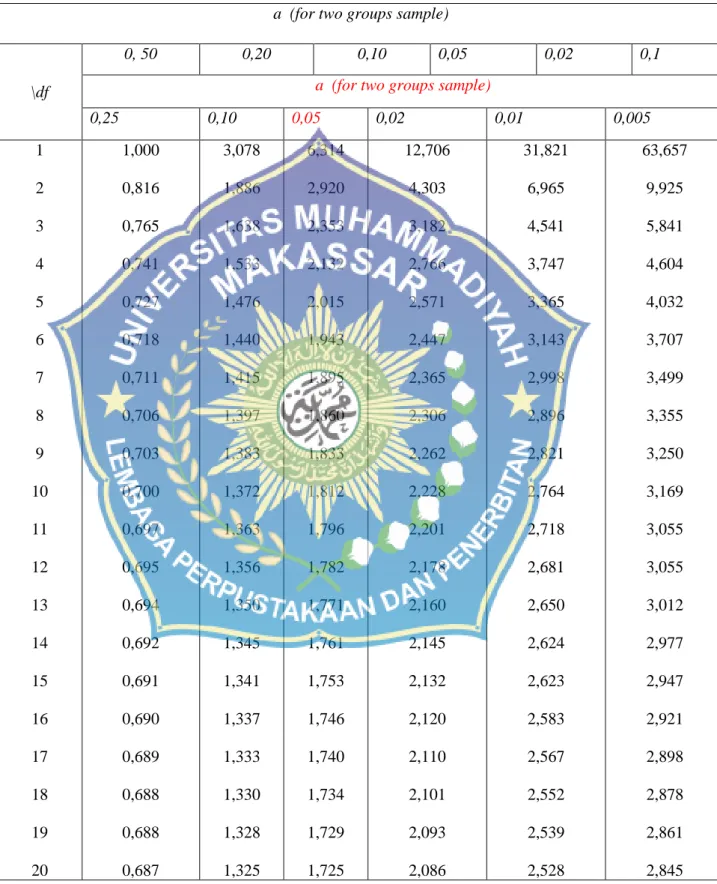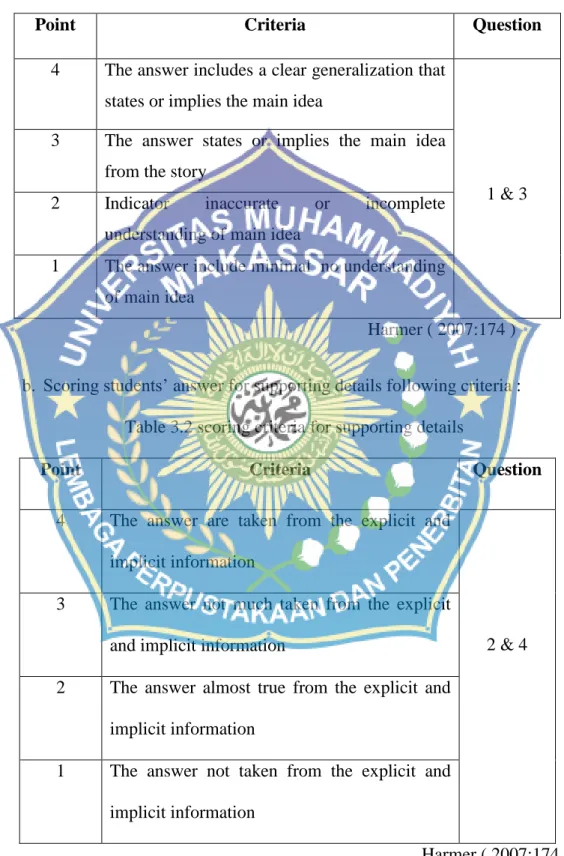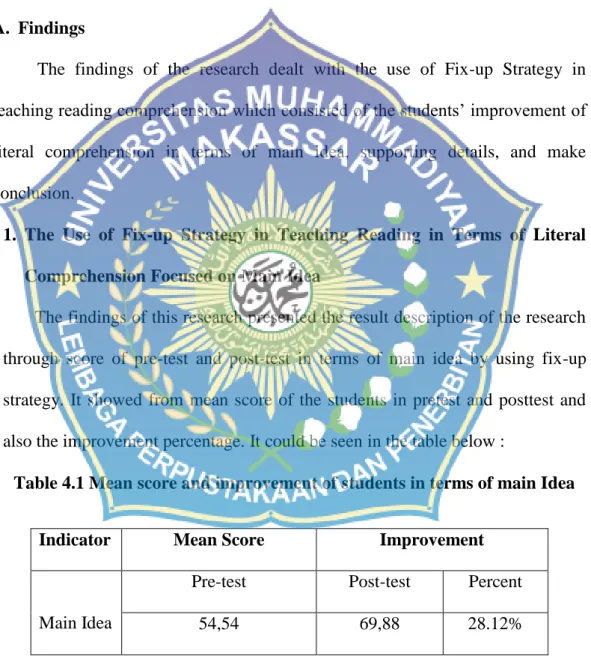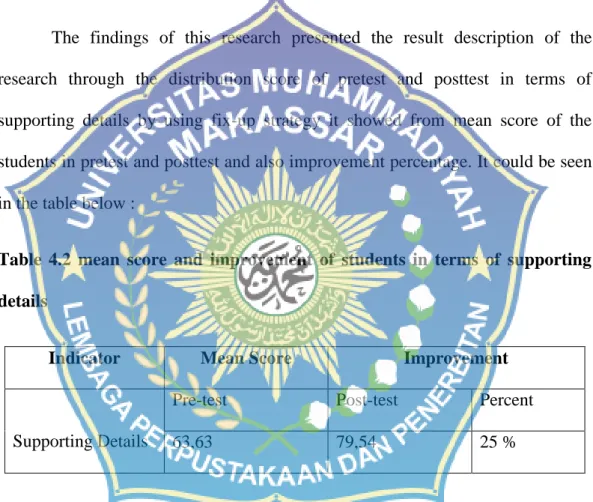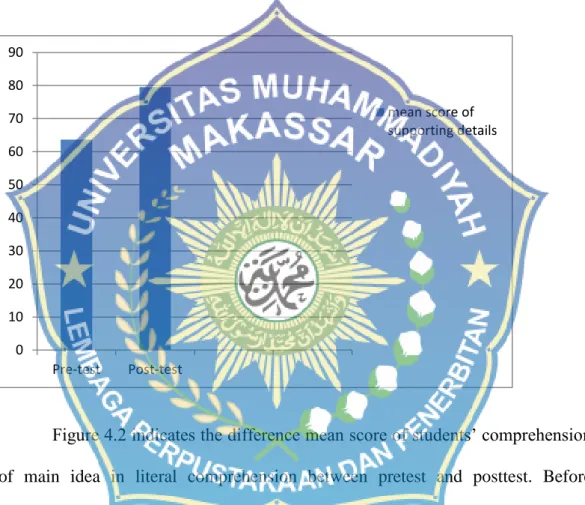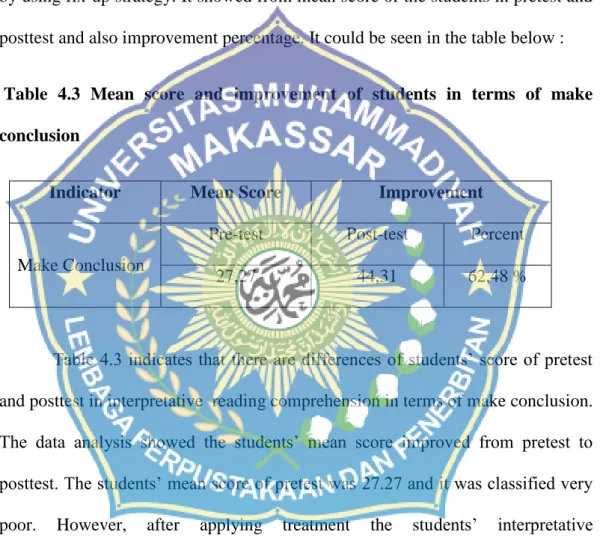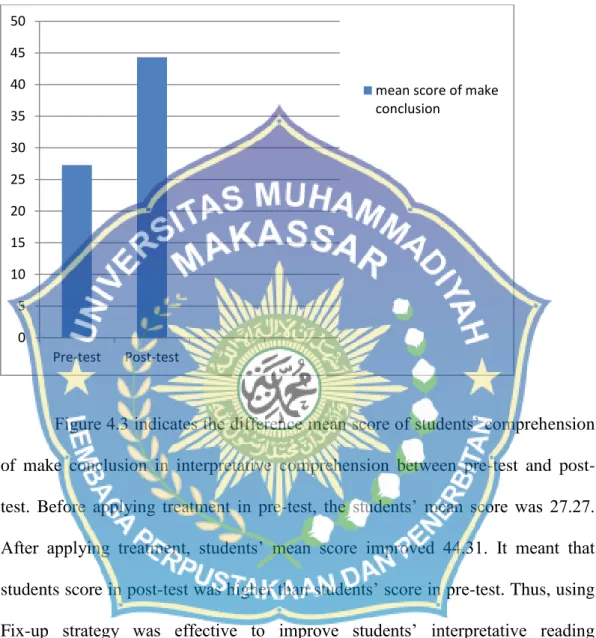INTRODUCTION
Background
According to Maxon, reading plays an important role in language learning to strengthen the skills students acquire in listening, speaking and writing. There are several reasons why the teacher should prompt students to read the text in English. Second, the materials are often delivered in a monotonous manner so that students get bored.
Fourth, lack of opportunities for the students to actively engage in the teaching and learning process due to limited time, students' low motivation, the students' passivity during the English teaching and learning process. Related to the explanation above, after the researcher magang 1 some of the students' from SMAN 1 Jeneponto has a problem in English teaching and learning process. When the teacher asked the students to orally answer some question based on the text, most of the students could not give the correct answers.
According to Harmer, there are several reasons why a teacher should prepare students to read an English text. One of the strategies that a teacher can use in reading instruction to improve students' reading skills is the revision strategy.
Problem Statements
It meant that by using the fix-up strategy, students' literal reading comprehension (in terms of the main idea) improved. Thus, using the fix-up strategy was effective in improving students' literal reading comprehension (in terms of the main idea). Thus, using the fix-up strategy was effective in improving students' literal reading comprehension (in terms of supporting details).
It meant that using the fix-up strategy improved students' literal reading comprehension (in terms of drawing conclusions). By using the fix-up strategy, the students' reading comprehension was developed more meaningfully than with the conventional strategy. The fix-up strategy was effective in improving the literal understanding of the students in terms of the main idea.
The result of the students' scores in the pre-test and post-test of reading comprehension in the term of main idea. The result of the students' scores in the pre- and post-test of reading comprehension in the term for making a conclusion.
The Objective of the Study
Significances of Research
Scope of the Research
REVIEW OF RELATED LITERATURE
Previous Related Findings
Some Pertinent Ideas
There is a significant difference in the reading comprehension of the students before they were taught using the Fix-up strategy. A post-test was used to determine whether there was an improvement in students' reading comprehension after they were treated using the fix-up strategy. It meant that by using the fix-up strategy, students' literal comprehension (in terms of supporting details) was improved.
Thus, using the Fix-up strategy was effective in improving students' interpretive reading comprehension (in terms of completion). The adjustment strategy was effective in improving students' verbatim comprehension in terms of supporting details. The adjustment strategy was effective in improving students' interpretive understanding in terms of drawing an inference.
The result of the students' score in pre- and post-test of reading comprehension in the term of supporting details. The calculation of the students' score in pre-test and post-test of reading comprehension in terms of main idea. The calculation of the students' score in pre-test and post-test of reading comprehension in terms of supporting details.
The calculation of the students' scores in the pre-test and post-test of reading comprehension in relation to make-conclusion. The mean score of students' pre-test and post-test in literal comprehension focused main idea. Mean scores for students' pre- and post-test in Literal Comprehension Focused on Supporting Details.
The students' mean score before and after the interpretive comprehension test focused on reasoning.
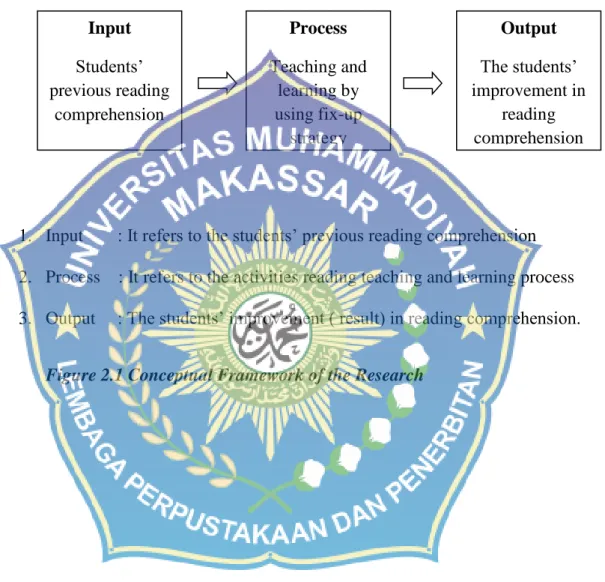
The Conceptual Framework
Hypothesis
There is no significant difference in students' reading comprehension before and after instruction with the Fix-Up strategy.
RESEARCH METHOD
Research Design
Population and Sample
Research Variable and Indicator
Research Instrument
Procedure of Data Collection
Technique of Data Analysis
RESEARCH FINDINGS
FINDINGS
The results of the research addressed the use of the Fix-up Strategy in the teaching of reading comprehension, which consisted in the improvement of students' literal understanding in terms of main idea, supporting details and conclusion. The results of this research presented the result description of the research through scores of pre-test and post-test in the form of main idea using fix-up strategy. It showed from the average score of the students in pretest and posttest and also the percentage of improvement.
This was proven by the average score of the students on the posttest of 69.88 and was rated as fairly good. The findings of this research presented a description of the results of the research through the distribution of the pre-test and post-test scores in terms of supporting details using the remedial strategy, which was revealed from the average score of the students in the pre-test and post-test and also the percentage of improvement. The finding of this research presented the description of the results of the research through the distributional assessment of pre-test and post-test in terms of conclusion using correction strategy.
It showed the average score of the students in the pretest and posttest and also the percentage of improvement. It can be seen in the table below: Table 4.3 Average grade and improvement of students in terms of completion. It was confirmed by the average score of the students in the posttest was 44.31 and was classified as weak.
This meant that students' score in post-test was higher than students' score in pre-test. Based on these results, it was concluded that there was significant difference between the students' reading comprehension treated with literal comprehension in terms of (main idea and supporting details) and interpretive comprehension in terms of (make a conclusion) before and after the use of correction strategy.

DISCUSSION
The effect of using a remedial strategy on reading comprehension found that in the class that was taught using the remedial strategy (experimental class), it was clearly evident that before the treatment, the student's reading comprehension of the narrative text could be categorized as less (50,31). Based on the mean scores, it can be interpreted that the reading comprehension of the students in the narrative text of those who learned with the correction strategy (experimental class) increased by as much as 18.61. In the class that was taught without the use of a correction strategy (control class), it is clearly seen that before the treatment, the student's reading comprehension of the narrative text can be categorized as lower (51,48).
It could thus be deduced statistically based on t-test value that fix-up strategy was more effective in developing students' understanding of literal and interpretive in reading comprehension. Based on the results of the students' answers either in the control or experimental group before and after treatment, the researcher noticed that the students often did not understand the text. Finally, the researcher made the post-test to know the students' reading comprehension after using the Fix-up strategy and the result from the students' reading test.
Based on the result of the finding that students' literal understanding before treatment was categorized in fair support on pre-test, but after treatment, categorized in good in main idea on post-test. Based on the result of the finding that the students' interpretive understanding before the treatment was given was categorized in very poor conclusion on pretest, but after treatment categorized in poor conclusion on posttest. From the result and discussion above, it appeared that active reading was still necessary to improve students' reading at their comprehension level.
Based on the research results, the students have already made significant progress in reading after receiving the treatment. In addition, based on the research results, the performance of students taught by using the Fix-up strategy is better than the use of a conventional way. 2014 improvement of the students' reading comprehension ability through visualization of the eight class students at Smp Negeri 1 Pedanin on academiceyar of 2013/2014 (doctoral thesis, Universitas negeri Yogyakarta).
The Effectiveness of Using Fix Up Strategy to Learn Reading Seen by Students' Self-Confidence (An Experimental Research in Eighth Grade Students of SMP Negeri 2 Temanggung in the Academic Year 2011/2012). Improving the Reading Comprehension Technique of Students in the Eleventh Grade of Sma Negeri 1 Sanden in the Academic Year 2012/2013 (PhD thesis, Universitas Negeri Yogyakarta).
CONCLUSION AND SUGGESTION
CONCLUSION
SUGGESTION
Linking cognitive theory and assessment:. measuring individual differences in reading comprehension. http://www.nasponline.org/publications/periodical/spr/volume-41/volume-41-issue-3/connecting-cognitive-theory-and-assessment-measuring-individual-differences-in-reading-comprehension. Correlation between students' reading motivation and students' reading comprehension, Indonesia: STKIP PGRI Sumatera Barat. Effective instructional strategies for improving reading comprehension in K-3 students. online), (https://ww.districadministration.com/sites/districadministration/files /sites/districadministration/files/resources/improving_reading.3.pdf.
Effects of English metacognitive strategy instruction on the reading comprehension of learning approach (Calla), (online), Vol. Improving Students' English Reading Skills by Using Peer Supported Learning Strategies of Grade VII Students of smp 1. The Effect Of Using Fix-Up Strategy Towards Reading Comprehension Of The Second Year Students at Sman 2 Tapung Kampar Regency.
